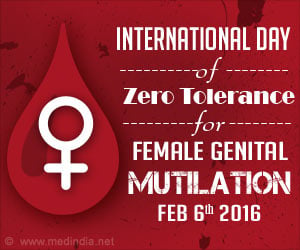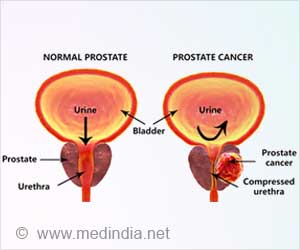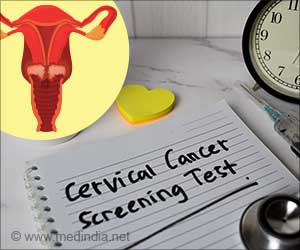- International Day of Zero Tolerance for Female Genital Mutilation (FGM) is being observed on Wednesday 6th February 2019
- Focuses on the creation of awareness among girls and women about the dangers of FGM
- This global effort could save millions of lives of innocent girls and women, now and in the future
Read More..
What is Female Genital Mutilation (FGM)?
As per the World Health Organization (WHO), FGM refers to all procedures that involve intentionally altering or injuring the external genitalia of females for non-medical purposes. It is regarded internationally as a gross violation of the human rights of girls and women. It stems from deep-rooted gender discrimination against women in certain ethnic groups around the globe.FGM is practiced mostly in 30 countries, including Yemen, Iraqi Kurdistan, Indonesia and 27 African countries. FGM denies girls and women their dignity, endangers their health, and causes unnecessary pain and suffering, which have lifelong consequences and can even result in death.
Key Facts & Figures
- Approximately 200 million women and girls alive today have been subjected to FGM globally
- Countries, where FGM is most prevalent in the age-group 15-49 years, are Somalia (98%), Guinea (97%), Djibouti (93%), and Egypt (87%)
- Over 44 million girls aged 14 years and younger have undergone FGM and 3 million are at risk every year
- In the above age-group, FGM is most prevalent in Mali (73%), Gambia (56%), Mauritania (54%), and Indonesia (49%)
- The target for eliminating FGM has been set for 2030
- Ending FGM by 2030 is a part of the Sustainable Development Goals (SDGs), which are a collection of 17 global goals set by the UN General Assembly in 2015
- SDG Goal 5, Target 5.3 on Gender Equality, aims at eliminating all harmful practices, including child / early / forced marriage and FGM
- This global effort will require over USD 980 million for its proper implementation
Factors Influencing FGM
There are multiple factors that influence FGM. These include social, cultural, and religious factors within various communities and ethnic groups. These include the following:- Social conventions of certain ethnic groups
- Cultural norms regarding femininity and modesty
- Beliefs regarding proper sexual behavior
- Influence of fanatic religious / community leaders
- Medical malpractice by unqualified quack doctors
Consequences of FGM
- Severe pain and bleeding
- Swelling of genital tissue
- Painful urination
- Menstrual abnormalities
- Psychological problems e.g. post-traumatic stress disorder (PTSD), anxiety, and depression
- Genital cyst formation and infections
- Sexually Transmitted Diseases (STD)
- Sexual problems
- Childbirth complications e.g. post-partum hemorrhage, miscarriage and stillbirths
- Increased risk of newborn deaths
- Infertility
The Way Forward
Some of the strategies for taking forward the agenda of FGM elimination are indicated below:- Sustainable Funding: As has been indicated above, a huge amount of money (USD 980 million) will be required for this program until 2030. Therefore, sustained funding is a prerequisite for the success of this global effort
- Meeting Deadlines: A strict adherence to SDG target timelines is a must so that each of the stages of the program is completed in a timely manner
- Strengthening Health Infrastructure: The health infrastructure needs to be strengthened so that proper health services can be delivered to those at most risk
- Improving Health Education: Women, especially girls, need to be educated about the dangers of FGM
- Increasing Advocacy: More advocacy is required, particularly at the community level to spread the message
- Involving Religious and Community Leaders: Involving religious and community leaders is crucial so that an open dialogue can be set-up between them and the people of the community to discuss issues pertaining to FGM
- Health Policy Reforms: There is a need for health policy reforms at the country level so that the issue of FGM can be prioritized in line with the global agenda
Conclusion
It is evident from the foregoing discussion that a concerted effort on the part of the UN Member States is the need of the hour. In this regard, some of the proactive intergovernmental organizations, including the European Union, the African Union, and the Organization of Islamic Cooperation have already given a “Call to Action”. Therefore, proper implementation of the various strategies at the grassroots level will help empower communities, women and girls in order to ensure that the global elimination of FGM becomes a reality by 2030.Reference:
- United Nations: International Day of Zero Tolerance for Female Genital Mutilation, 6 February - (http://www.un.org/en/events/femalegenitalmutilationday/)
- World Health Organization: International Day of Zero Tolerance for Female Genital Mutilation - (https://www.who.int/life-course/news/events/0-tolerance-to-female-genital-mutilation/en/)
Source-Medindia










